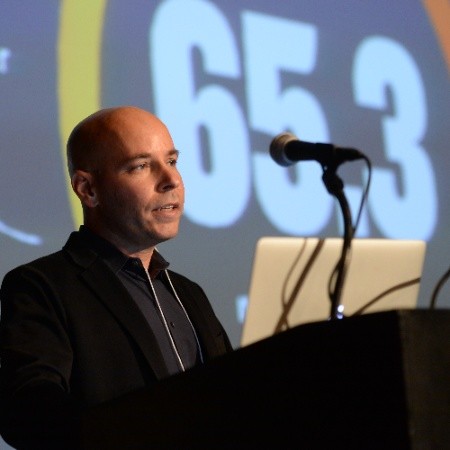Almost two years after it surprised everyone with an announcement of a new deal with its former foe, Greenpeace, Kimberly Clark is pushing the envelope again. True, KC’s announcement yesterday on its new Sustainability 2015 Goals might not sound such groundbreaking news at first glance, but a more thorough look into their plan reveals a comprehensive sustainability plan that might actually succeed. Why? Because it takes into consideration the all pillars of sustainability and not just the environment.
First, the details. These new set of sustainability goals for 2015 are according to K-C “the company's most ambitious and comprehensive sustainability strategy to date.” K-C first set environmental improvement goals with a five-year time horizon in 1994, and according to K-C, the company has been raising the bar on environmental goals every five years.
I guess that it least until the 2009 Greenpeace (who led the Kleercut campaign against K-C) and some other environmental organizations were in disagreement with K-C on how high this bar is. In fact, they accused the company in misleading the public about its environmental practices. But since 2009, when K-C announced on “adopting stronger fiber sourcing standards that will increase conservation of forests globally” as part of its deal with Greenpeace, the general notion is that K-C is really raising the bar on sustainability.
K-C’s new sustainability program is definitely showing K-C is on the right path now. Sustainability 2015, according to the company, engages K-C’s global businesses, brands and employees and is built on a framework of People, Planet and Products, which corresponds with the triple bottom line concept.
The part relates to People include goals such as zero workplace fatalities, socially focused programs in all K-C communities and 100% compliance to K-C social standards for contract manufacturers and top-tier suppliers. On the Planet’s side, the goals include 25% reduction in water use and maintain quality of discharge, usage of 100% certified fiber, 5% absolute reduction in GHG emissions and zero manufacturing waste to landfill. When it comes to Products, K-C’s goals include 250 million new consumers touched, 25% of 2015 net sales from environmentally innovative products and 20% reduction in packaging environmental impact.
These goals are by no means trivial or easy to achieve given the fact we’re talking about the world's top maker of personal paper products. Still, we have seen big companies coming out with even more challenging goals – Unilever, announced last November it plans to cut the environmental footprint of its products in half, P&G has released on April the second version of its environmental sustainability scorecard, moving from benchmarking suppliers to rating and rewarding them, and Wal-Mart has a goal of eliminating all landfill waste generated by U.S. operations by 2025, just to name a few. Nevertheless, I find K-C’s plan exceptional comparing to the other plans because of its integration of all three “pillars” of sustainability – economic, environmental, and social.
Why this integration is so important? Because it can makes the difference between a failure and a success, or in other words – it helps making sustainability programs more sustainable. We read almost every week about companies announcing ambitious sustainability goals, but the problem is that many times these new initiatives take into consideration only one pillar of sustainability, usually environmental sustainability. Then comes the implementation phase and these companies find out that good intentions are not enough, especially when the economic side is being ignored.
For example, Wal-Mart CEO William Simon recently told the Wall Street Journal in a recent interview “sustainability and some of these other initiatives can be distracting if they don't add to every day low cost”, or in other words, sustainability efforts need to be aligned with the company’s core business if they want to stay for the long run. To do so, companies need to take into consideration all pillars of sustainability, including the economic one, which is exactly what K-C does here.
Creating shared value where both society/environment and the company are generating significant benefits is the key in making sustainability initiatives work. Using 100% certified fiber is interconnected with having more customers and providing better financial results – one can’t be achieved without the other. It’s obvious that K-C understand it as we can learn from Suhas Apte, K-C’s Vice President, Global Sustainability: "We believe our Sustainability 2015 goals and focus areas will continue to be a point of differentiation for Kimberly-Clark and help deliver tangible value in social, environmental and financial benefits for our businesses and our planet.”
This is a refreshing approach that provides greater chances that K-C’s sustainability goals will actually be met in 2015, on the way of making Kleenex, Huggies, Scott, Pull-Ups, Cottonelle and other K-C’s brands more sustainable than ever.
Raz Godelnik is the co-founder and CEO of Eco-Libris, a green company working to green up the book industry in the digital age. He is also an adjunct professor in the University of Delaware’s Alfred Lerner College of Business and Economics.

Raz Godelnik is an Assistant Professor and the Co-Director of the MS in Strategic Design & Management program at Parsons School of Design in New York. Currently, his research projects focus on the impact of the sharing economy on traditional business, the sharing economy and cities’ resilience, the future of design thinking, and the integration of sustainability into Millennials’ lifestyles. Raz is the co-founder of two green startups – Hemper Jeans and Eco-Libris and holds an MBA from Tel Aviv University.














